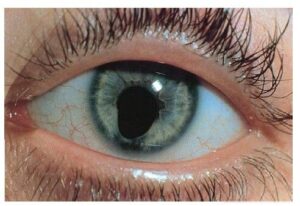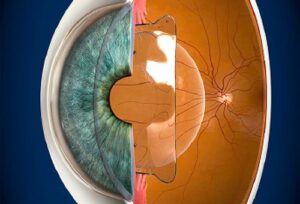
Anushka Super Speciality Eye Hospital
Call: 90044 44422 / 99213 44422 | Timings : 8.30 a.m to 5.30 p.m (Mon-Sat) | Add: Shri Swami Samarth Soc, Kaneri Dhamankar Naka, Bhiwandi




Accredited for Quality Care
Chalazion vs. Stye : Causes, Symptoms, Diagnosis, and Treatment
anushka
28 February 2025
Introduction
Eye problems can be both uncomfortable and concerning, especially when a painful lump appears on the eyelid. Two common conditions that cause such lumps are chalazion and stye (hordeolum). While they may appear similar, they have distinct causes, symptoms, and treatment approaches. In this blog, we will explore the differences between chalazion and stye, their diagnosis, and effective management strategies. Additionally, we will answer ten frequently asked questions related to these conditions.
What is a Chalazion?
A chalazion is a painless, slow-growing lump or cyst that forms on the eyelid due to a blocked meibomian gland (oil-producing gland). It is not caused by an infection but rather by inflammation, which leads to the accumulation of oil inside the gland.
Symptoms of Chalazion
- A firm, painless bump on the upper or lower eyelid
- Mild swelling or redness initially
- Possible blurring of vision if the chalazion is large enough to press against the eye
- A feeling of heaviness in the affected eyelid
What is a Stye (Hordeolum)?
A stye is a painful, red lump that forms along the edge of the eyelid due to an infected oil gland, typically caused by bacterial infection (Staphylococcus aureus). There are two types of styes:
- External Stye – Forms on the outer edge of the eyelid, usually in a hair follicle.
- Internal Stye – Develops inside the eyelid due to an infection in the meibomian gland.
Symptoms of Stye
- A red, swollen, and painful lump on the eyelid
- Tenderness and discomfort, especially when blinking
- Possible pus-filled center
- Increased tearing and sensitivity to light
- A sensation of a foreign body in the eye
Differential Diagnosis: Chalazion vs. Stye
Differences Between Chalazion and Stye
| Feature | Chalazion | Stye (Hordeolum) |
|---|---|---|
| Cause | Blocked meibomian gland (non-infectious) | Bacterial infection (infectious) |
| Pain | Usually painless | Painful and tender |
| Location | Lid | Along the eyelid margin (external) or inside the lid (internal) |
| Appearance | Hard, round lump, grows slowly | Red, swollen bump, may have pus |
| Healing Time | Weeks to months | A few days to a week |
| Complications | Can turn into a chronic cyst | May develop into a chalazion if untreated |
Other Conditions with Similar Symptoms
- Blepharitis – Chronic inflammation of the eyelid margins, often associated with dandruff and eye irritation.
- Preseptal Cellulitis – Infection of the eyelid tissue, leading to painful swelling, redness, and fever.
- Sebaceous Cyst – A non-painful lump formed due to oil gland blockage.
- Basal Cell Carcinoma – A rare but serious eyelid tumor that may resemble a chalazion or stye.
Management and Treatment
Home Remedies for Chalazion and Stye
Most cases of chalazion and stye can be treated at home with simple self-care measures:
- Warm Compress – Applying a warm, moist cloth to the affected eyelid for 10-15 minutes, 3-4 times a day can help open the blocked gland and promote healing.
- Eyelid Hygiene – Cleaning the eyelid with diluted baby shampoo or an over-the-counter eyelid cleanser can prevent further infections.
- Avoid Squeezing – Never try to pop a chalazion or stye, as it can worsen the infection.
- Use Lubricating Eye Drops – Artificial tears can help relieve irritation and dryness.
Medical Treatment Options
If the condition does not improve within a few weeks, medical intervention may be needed:
- Antibiotic Ointments & Eye Drops – Useful for styes caused by bacterial infections.
- Steroid Injections – In cases of large or persistent chalazions, steroid injections may reduce inflammation.
- Incision and Drainage – A doctor may perform a minor surgical procedure to drain a large or persistent chalazion or stye.
Prevention Tips
- Maintain good eyelid hygiene by washing hands and avoiding eye rubbing.
- Remove makeup before sleeping to prevent clogging of oil glands.
- Replace old cosmetics to reduce bacterial contamination.
- Use warm compresses if you have a history of recurrent chalazions or styes.
10 Commonly Asked Questions About Chalazion and Stye
1. What is the difference between a chalazion and a stye?
A chalazion is a painless, slow-growing lump caused by a blocked oil gland, while a stye is a painful, red bump caused by a bacterial infection.
2. Can a stye turn into a chalazion?
Yes, if a stye does not fully drain or heal, it can develop into a chalazion, forming a firm cyst.
3. How long does a chalazion or stye last?
A stye usually resolves within 7-10 days, while a chalazion can take weeks to months to disappear.
4. Are chalazions or styes contagious?
A chalazion is not contagious, but a stye can spread bacteria if proper hygiene is not maintained.
5. Can I pop a stye or chalazion at home?
No, squeezing or popping it can cause infection and complications. It’s best to let it heal naturally or seek medical help.
6. When should I see a doctor for a chalazion or stye?
Seek medical attention if:
- The lump does not improve within 2-3 weeks.
- Vision is affected.
- There is excessive pain, swelling, or fever.
7. What is the best treatment for a chalazion or stye?
Home remedies like warm compresses are effective, but if the condition persists, antibiotics or surgical drainage may be needed.
8. How can I prevent chalazions and styes?
- Keep eyelids clean.
- Avoid touching or rubbing your eyes.
- Remove makeup before bed.
9. Can a chalazion or stye come back?
Yes, recurrence is common, especially if you have underlying conditions like blepharitis or meibomian gland dysfunction.
10. Do I need surgery for a chalazion or stye?
Surgery is only required for large, persistent, or vision-affecting chalazions and styes that do not respond to home treatment.
Conclusion
Chalazion and stye are common eyelid conditions that can cause discomfort but are usually harmless. Understanding their differences and proper management can help ensure faster recovery. Practicing good eyelid hygiene is key to preventing these conditions from recurring. If symptoms persist or worsen, consult an eye care specialist for appropriate treatment.
If you found this blog helpful, feel free to share it with others who might benefit from this information!
Recent Posts


